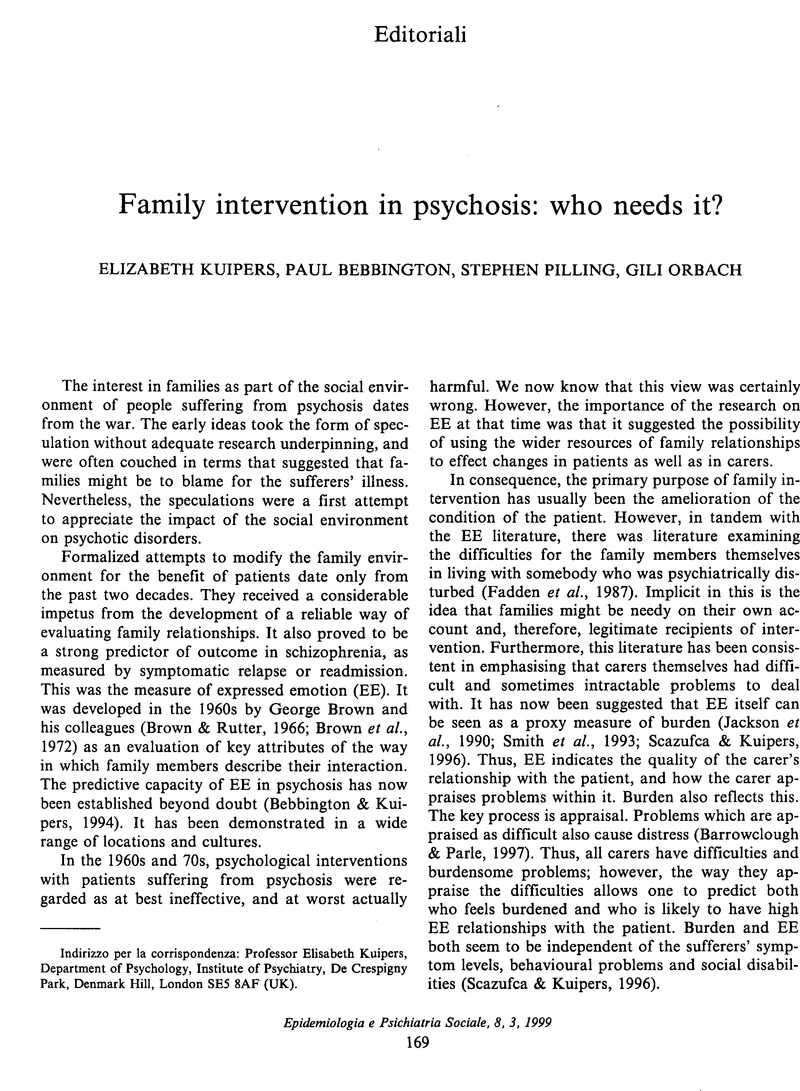Crossref Citations
This article has been cited by the following publications. This list is generated based on data provided by Crossref.
Bebbington, P.E.
and
Kuipers, E.
2003.
Schizophrenia.
p.
613.
Lewis, Shôn W.
Tarrier, Nicolas
and
Drake, Richard James
2005.
Integrating non-drug treatments in early schizophrenia.
British Journal of Psychiatry,
Vol. 187,
Issue. S48,
p.
s65.
Gómez‐de‐Regil, L.
Kwapil, T. R.
and
Barrantes‐Vidal, N.
2014.
Predictors of expressed emotion, burden and quality of life in relatives of Mexican patients with psychosis.
Journal of Psychiatric and Mental Health Nursing,
Vol. 21,
Issue. 2,
p.
170.



